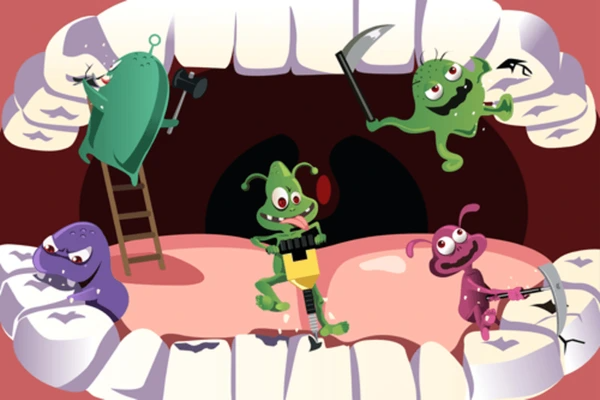Cavities: A Hidden Threat to Adult Dental Health
- Dr. Nadzra E. Awali

- Aug 15, 2024
- 3 min read

When people think of cavities, they often associate them with children, believing that tooth decay is something that only affects the younger population. However, the reality is quite different. According to the National Oral Health Survey, an astonishing 97.1% of six-year-olds experience tooth decay. Yet, the risk of developing cavities extends well into adulthood, with many adults, particularly older individuals, facing significant challenges related to tooth decay. In fact, more adults than children require treatment for cavities, and older adults are particularly susceptible to a specific type of decay known as root cavities, which occur on the roots of the teeth.
Understanding the Development of Root Cavities
The process through which cavities develop is consistent, whether they form on the visible part of the tooth or on the root. Cavities arise when bacteria in the mouth produce acids that feed on sugars from our diet. In typical cavity formation, these acids erode the tooth's enamel, the hard outer layer that protects the tooth. However, root cavities are different. They target the cementum, a softer material that covers the roots of the teeth. Because cementum is less durable than enamel, root cavities can develop at a rate twice as fast as other cavities, making early detection and intervention critical.
One of the primary factors contributing to the formation of root cavities is gum recession. When gums pull away from the teeth, they expose the roots, which makes them more vulnerable to decay. A review from the Cochrane Database of Systematic Reviews notes that receding gums are often a prerequisite for root cavities, although 10% to 20% of these cavities can develop beneath the gumline without visible signs.
Identifying Those at Risk for Root Cavities
The American Dental Association highlights that adults over the age of 50 are particularly prone to root cavities, with the peak age for their development being around 70 years old. This increased risk is largely due to the prevalence of gum recession in older adults, who are also more likely to retain their natural teeth throughout their lives. As people age, they may experience a decline in dexterity, making it more challenging to maintain proper oral hygiene. Additionally, lifestyle factors such as smoking, excessive alcohol consumption, and high sugar intake can further elevate the risk of developing root cavities.
Treating Root Cavities
The treatment for root cavities is similar to that for other types of cavities. If a dentist identifies a root cavity in its early stages, there may be opportunities to halt the decay process and protect the tooth from further damage. Preventive measures can include fluoride treatments, consistent oral hygiene practices to remove plaque, and dietary adjustments to limit sugar intake.
However, if a root cavity progresses to a point where it causes pain or affects the tooth's functionality, restorative procedures become necessary. This typically involves the dentist removing the decayed portion of the tooth and filling it with a suitable material, such as composite resin or amalgam.
Preventing Root Cavities
Preventing root cavities, as well as other types of tooth decay, is entirely possible through diligent oral care practices. The American Dental Association recommends several key strategies to help avoid cavities:
- Brush your teeth at least twice daily with fluoride toothpaste. For those who find manual brushing difficult, using an electric toothbrush can be beneficial.
- Clean between your teeth using floss or interdental cleaners to remove plaque buildup.
- Limit sugary foods and beverages in your diet to reduce the risk of decay.
- Schedule regular dental check-ups and cleanings to ensure your oral health is monitored.
- Discuss in-office fluoride treatments with your dentist, which can provide additional protection against decay.
If you are experiencing gum recession, it's advisable to consult your dental professional for tailored advice on improving gum health and minimizing the risk of root cavities. By working collaboratively with your dentist, you can implement effective strategies to prevent and treat cavities, safeguarding your dental health as you age.
In conclusion, while cavities may be commonly associated with childhood, adults must remain vigilant about their oral health. Understanding the risks, recognizing the signs of decay, and adopting preventive measures can help maintain a healthy smile well into later years.



Comments